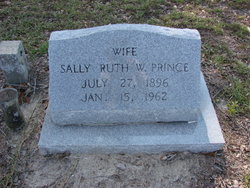

If accessibility were a numbers game, you could successfully argue that not all these 61 million disabled people need accessible content. Source: Graph: ADA Title III Website Accessibility Lawsuits in Federal Court 2017-2019 Commercial incentive If you care about nothing else, you should care about your legal risk when it comes to digital accessibility. If you’re receiving any level of US Federal funds, you are also required to comply with Section 508 of the Vocational Rehabilitation Act. But its “father”, Honorable Tony Coelho explained that the spirit of the ADA requires websites to be accessible. What you probably didn’t hear about is that in 20, there were nearly 5,000 digital accessibility lawsuits! The Americans with Disabilities Act (ADA) does not specifically have guidelines for access to digital content. You may have heard of significant lawsuits like Target, or more recently Domino’s. Creating accessible digital content is also the right thing to do. And there’s a level of commercial incentive we can’t forget. Why is digital content accessibility so important?Ĭreating accessible content is often a legal requirement. Disabilities are more complex than can be discussed as a whole in a short article like this one. These descriptions are just a brief overview. Someone who is dyslexic may have difficulties with a lot of complex text. Someone with ADHD may have concentration issues if there are too many things on a page, especially if they are moving. Someone who got hit in the head many times when they played High School football may have memory issues. Someone with Repetitive Stress Injury may have a lot of pain using a mouse or a trackpad. They may rely on speech input for navigating and interacting with digital content. Someone who is paralyzed may not be able to use either a mouse or a keyboard. They may rely only on the keyboard for navigating and interacting with digital content. Someone who has cerebral palsy may not be able to use a mouse. There are a number of conditions that affect mobility in relations to web use. Someone who is Deaf or hard of hearing will not have access to any audio information (think audio and video) Someone who has low vision may rely on increased font size, or high contrast mode. Someone who is blind may rely on a screen reader (software that allows you to interact with computers, including having what’s on the screen read out). We’re talking about 4 primary groups of people in terms of who encounters barriers on the web. That is, a condition that impacts one or more major activities of daily living. A recent CDC report confirms findings that 61 million adult Americans have a disability. You may have seen elsewhere a 1 in 5, or 20% ratio. I mentioned that 1 in 4 adult American has a disability. Who is accessibility important for?ĭigital accessibility first and foremost is aimed at ensuring that disabled people can get to and consume content. Accessible digital content is good for everyone. But accessible digital content is not just about disabled people. This is the crux of it – disabled people need to be able to get to your content, perceive your content, and understand it. The inclusive practice of creating accessible content usable by everyone, regardless of their level of ability or disability. The definition I arrive at when I distill all that information is:

And the 50 or so guests I asked all gave me slightly different answers. I ask “What is digital accessibility?” of my guests on the A11y Rules Podcast. What is accessible content?Īccessible content is content that is usable by everyone. In other words, content viewed on a computer, tablet, cell phone, or other computerized device will be digital content. And the list could go on with a bit of digging.Videos on YouTube, Vimeo, TikTok, or Instagram are digital content,.ePUB and other books you can read on your eReader are digital content,.Word and Excel documents are digital content,.“Of course,” you’ll say, “but tell me more!” If you’re on the internet, you’re reading, looking at, watching, or listening to digital content. Like the article you’re reading now (unless you’re reading a version printed on paper!). What is digital content?ĭigital content is any content delivered digitally.
#ADA READ FILR BACKWARDS HOW TO#
Let’s also look at which audiences need accessible content, and how to create such content. Let’s look at what digital content is, and why it’s important. You can create digital content that the vast majority of people can perceive, operate, and understand. In other words, a large segment of your audience may be unable to access your message. Chances are, your digital content isn’t accessible to them. One in four adult Americans has a disability.


 0 kommentar(er)
0 kommentar(er)
